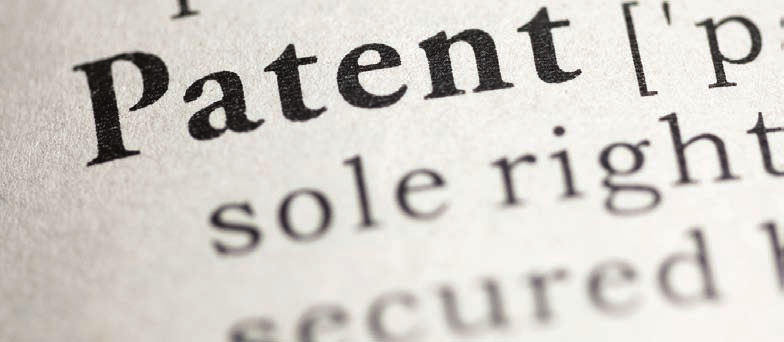
Zombie Trade Marks and Residual Goodwill!
Zombie Trade Marks!! Beware and be-warned!! A legal aspect of trade mark law which ought to be seriously considered in the current commercial world is - whether a trade mark whose use has been abandoned by the original owner can be adopted/appropriated by an unrelated new party and what effect any residual goodwill in the original use and exploitation may have on the subsequent use and exploitation.
Zombie trade marks (also known as ghost brands, orphan brands amongst others), while having no statutory meaning, commonly refer to marks which have been previously abandoned, and now newly revived, but still retaining a degree (whether small or large) of consumer recall (i.e. residual goodwill). It is not uncommon for brands, Indian or foreign, to have been abandoned (i.e. ceasing of all commercial use) by their original owners. The said abandonment can be for a number of reasons. It is equally not uncommon, especially now, for new entities and entrepreneurs (unrelated to the original owner) to seek to revive the abandoned brand and commence “re-use” of the same on the same or entirely new line of goods/ services. The question faced by the new “owner”- will the new “re-use” cause confusion in the minds of customers, especially where the newly revived abandoned mark continues to enjoy recall and residual goodwill?
While the answer to the above question will have to be evaluated on a case-to-case basis, trade mark jurisprudence in India seems to suggest that the original owner may be able to exert some rights (and impose limitations) over the new unrelated owner of the revived abandoned mark. Put differently, the new unrelated owner would have to be very careful in ensuring that no residual goodwill exists in an abandoned mark, sought to be revived.
A recent decision of the Delhi High Court in Boman R. Irani v. Rashid Ahmad Mirza (not the Bollywood Actor!!) has dealt with this aspect of trade mark law to some degree. In the Boman Irani matter, the Plaintiff filed a suit to prevent the Defendants from using the mark ‘YEZDI’ in respect of footwear. It was averred that the plaintiff’s father had commenced use of the YEZDI mark in respect of motorcycles in 1969 and that, although manufacture of motorcycles under the YEZDI mark was stopped in 1996, goodwill and reputation in the YEZDI brand continued to subsist today (through Internet presence, biker gangs, re-sale etc.). The plaintiff did state that they were in the process of relaunching the said brand. The defendant argued, inter alia, that the plaintiff themselves had admitted to have ceased use of the YEZDI mark. The Ld. Single Judge refused to grant interim injunction to the plaintiff stating, inter alia, that the plaintiff has not been using its mark. However, the Ld. Single Judge did grant a limited injunction restraining the defendant from claiming, in any manner, that their footwear under the YEZDI mark was inspired by the YEZDI motorcycles or in any way associated with YEZDI motorcycles. This order is very interesting as it does recognize the goodwill continuing to exist in YEZDI motorcycles, while punishing the plaintiff for having abandoned use of the YEZDI mark.
The above discussed YEZDI case is a perfect example of this, where although interim injunction was refused, a limitation was imposed on the defendant based on the residual goodwill enjoyed by the YEZDI mark for motorcycles. While common sense seems to suggest that a new owner is free to revive and use an abandoned mark, the matter is not so simple, especially in common law jurisdictions like India.
Generally, trade mark rights in a given brand may get lost primarily on the ground of non-use, abandonment or loss of distinctiveness. The issue of zombie trademarks and residual goodwill is, of course, more pertinent for unregistered trademarks. Unregistered trademarks may lose their trade mark significance on account of abandonment by the owner or when the mark itself becomes common to trade. As far as registered trademarks are concerned, the consequence of abandonment by the registered proprietor may result in the filing of a non-use rectification by an “aggrieved” new entity or entrepreneur seeking to use the said abandoned registered trade mark. If the non-use rectification is successful, and there is no residual goodwill subsisting in the rectified abandoned mark, the new owner is then free to use and exploit the said mark. As far as retaining an abandoned mark on the Trade Marks Register, the Hon’ble Supreme Court of India in National Bell Co. & Anr. v. Metal Goods Mfg. Co. (P) Ltd. & Anr. had observed that there is no justification in retaining a mark on the Register whose use has been abandoned by the owner or ceased to be connected with the owner.
The key issue from the perspective of the new owner, is residual goodwill residing in an abandoned mark. It does not help the cause of the new owner that Courts in India have recognized common law rights (i.e. goodwill and reputation) in marks not currently being used in India, though having a reputation in India. The recognition of trans-border reputation by the Hon’ble Supreme Court of India in N.R. Dongre v. Whirlpool Corporation is a classic example. This problem faced by the new owner may get further complicated depending on the goods/ services for which the newly revived abandoned mark is sought to be used. If the goods/ services offered by the new owner under the newly revived abandoned mark is the same as the original goods/ services, the chances of residual goodwill residing with the original owner (and consequent consumer connection) becomes higher. Imagine a new entity seeking to revive GOLD SPOT for aerated drinks. Surely, the public still recall the GOLD SPOT brand as originating from Parle or, at the very least, the public may get confused into thinking that Parle has revived its GOLD SPOT brand; which is not the case. In case where the new owner seeks to use the newly revived abandoned mark in respect of goods/ services different from the original use, showing residual reputation across business verticals may become challenging.
There is no doubt that one of the pillars of trade mark law is commercial exploitation and use. A trade mark is not allowed to sit and squat on his trade mark rights. That much is clear. However, the issue of zombie trademarks and residual goodwill certainly makes trade mark law interesting and indeed dangerous. After all, the Indian public still remembers HMT Watches, Rajdoot, Murphy Radios, Premier Padmini, Dayanora TVs etc. Wouldn’t a new owner find it very difficult to shake and shed the residual goodwill residing in these yesteryear brands?
Recent Posts

Condition Precedent and Condition Subsequent under the Indian Contract Act, 1872
Jan 2019

Conceptual Similarity of Trade Marks: The Indian Position
Nov 2018

Decoding the ‘Myth’ behind the 2-Part Claim Drafting Format in the context of the Koniklijke Philips’ Case
Oct 2018